Wagon
R
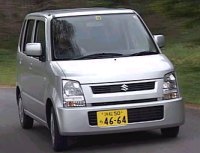 Wagon
R was born in 1993. Over the past 11 years, more than 2 million units
were
sold, making it the biggest selling K-car in history. It was also the
first
K-car beating Toyota Corolla in domestic sales chart. During those
years
it usually topped the K-car sales chart, such success must thanks to
its
outstanding packaging - a combination of good look, tall body, roomy
interior
and flexible seating. However, this formula was copied by Daihatsu Move
and other rivals quickly. In contrast, Wagon R improved little over the
years. It has lost its leading position. Wagon
R was born in 1993. Over the past 11 years, more than 2 million units
were
sold, making it the biggest selling K-car in history. It was also the
first
K-car beating Toyota Corolla in domestic sales chart. During those
years
it usually topped the K-car sales chart, such success must thanks to
its
outstanding packaging - a combination of good look, tall body, roomy
interior
and flexible seating. However, this formula was copied by Daihatsu Move
and other rivals quickly. In contrast, Wagon R improved little over the
years. It has lost its leading position.
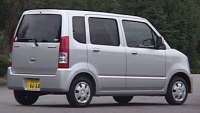 In
late 2003, a so-called "new generation" was launched, but in fact it is
just a re-package on the existing mechanicals. The new Wagon R still
rides
on strut and trailing arm suspensions, employing the same engines and
gearbox.
The monocoque chassis is 35mm lower than before, but otherwise is
unchanged,
including the 2360mm wheelbase and the rectangular profile. In my eyes,
this shape is by all means bland and boring, even failing to match the
original Wagon R. In
late 2003, a so-called "new generation" was launched, but in fact it is
just a re-package on the existing mechanicals. The new Wagon R still
rides
on strut and trailing arm suspensions, employing the same engines and
gearbox.
The monocoque chassis is 35mm lower than before, but otherwise is
unchanged,
including the 2360mm wheelbase and the rectangular profile. In my eyes,
this shape is by all means bland and boring, even failing to match the
original Wagon R.
The cabin, like
the exterior,
is disappointingly raw. Don’t talk of any quality materials. Don’t talk
of any styling and taste. Suzuki seems to have no intention to inject
any
desirability into the Wagon R. It just works - it offers countless of
storage
cubbies, a rear bench slide, split and fold flat, front and rear seats
that combine into a bed.... but these features are no longer new to the
class. In fact, most K-cars offer these utilities now. It used to offer
a class-leading cabin space, but now Daihatsu Move and Honda Life have
overtaken it by using longer wheelbase.
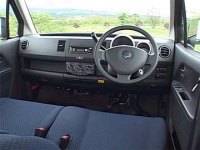 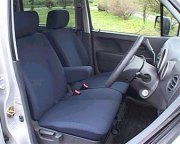 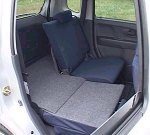
Wagon R seems to
be the victim
of Suzuki’s differentiated K-car range. When it was launched in 1993,
it
was considered to be a niche, trend-setting model. Today, Suzuki has at
least five K-cars in its menu - in particular, Lapin goes the niche
route,
MR Wagon shines in quality packaging. This leaves Wagon R little space
to explore. It can only concentrate on space, practicality and keen
pricing,
losing the limelight it used to get.
|